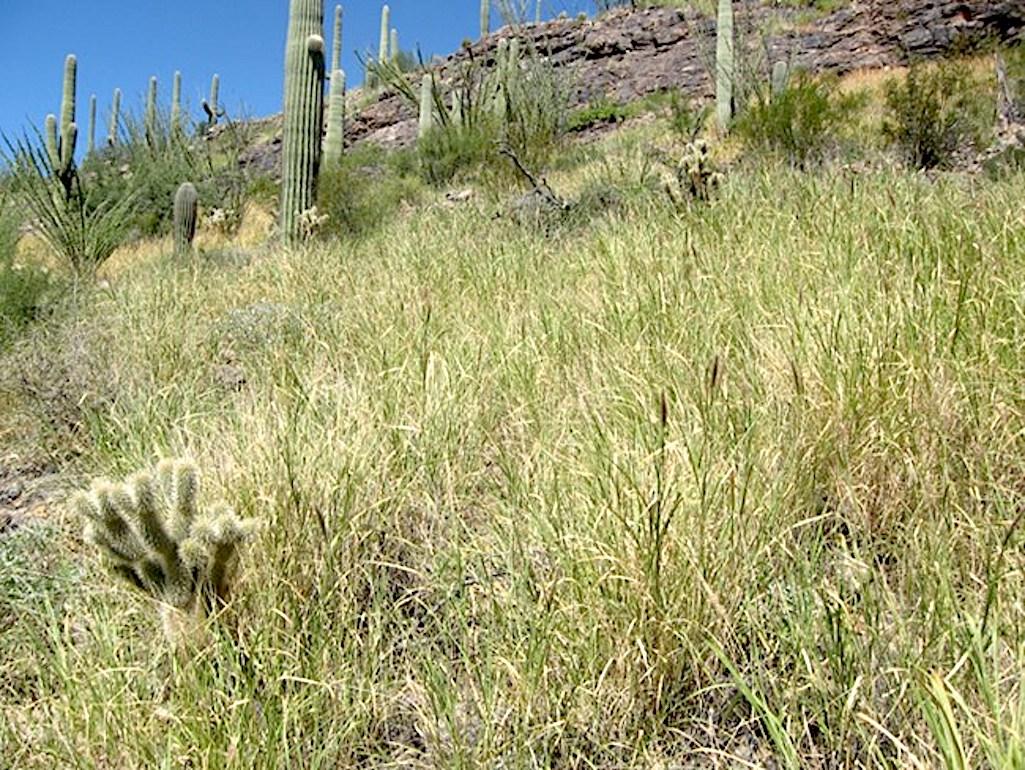
Buffelgrass is a threat to native species at Saguaro National Park/NPS file
Crews at Saguaro National Park are spraying herbicides in the Rincon Mountain District to control buffelgrass, a non-native invasive species that is a threat to the park's ecology.
The plan is to use aerial boom spraying in the areas around the Tanque Verde Ridge, Manning Camp, Quilter, and Arizona trails. Portions of these trails may be closed for parts of 1-3 days during active spraying, up to one hour after the spray dries. Any closure notices will be posted at trailheads and on the park's website.
There are no anticipated boom spray locations at Tucson Mountain District this year. Targeted spot treatments to treat smaller dense patches of buffelgrass may occur later in the month in both districts.
Any additional trail closures in either district will be posted on the park website. Herbicide treatment of buffelgrass is only effective when the grass is green after the monsoon rain. A helicopter is used to treat buffelgrass in areas of the park inaccessible or unsafe for ground crews. The park considers weather conditions before beginning treatment each day, including wind direction and wind speed, to ensure that the rain-sized droplets reach only their intended target areas. The exact starting date and time will depend upon these conditions.
Previous aerial spray treatment in high priority areas has reduced the size and density of treated buffelgrass patches in the park by 75 percent. This success enables the park to shift resources to target areas which have not yet been treated, including the large patch on the south side of the Rincon Mountains. These untreated buffelgrass patches have shown substantial growth in size and density with some areas doubling over seven years.
This prescribed treatment of buffelgrass was approved by the National Park Service in 2014 as part of a Restoration Plan and Environmental Assessment, which included aerial application of herbicide to control invasive, non-native plants in places that are unsafe or too remote for control by ground crews. Ground-based crews and volunteers will continue to control undesirable plants in accessible areas with manual pulling and herbicide from backpack sprayers.
Additional information on buffelgrass and the threat it poses to the park, as well as the park’s Restoration Plan and Environmental Assessment, are also available at: https://www.nps.gov/sagu/learn/management/restoration-plan.htm and https://www.nps.gov/sagu/learn/nature/buffelgrass.htm.
To help the park by joining crews in digging up buffelgrass, visit: https://www.nps.gov/sagu/getinvolved/supportyourpark/monthly-buffelgrass-pull.htmwww.nps.gov

 Support Essential Coverage of Essential Places
Support Essential Coverage of Essential Places






